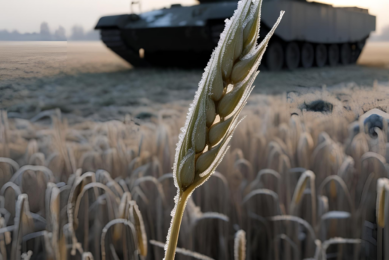Future of Ukrainian grain deal uncertain – impact on global market

The global grain market must be braced for uncertainty as concerns over the future of the Ukrainian grain deal remain high .
Although, Russia has returned to the United Nations-brokered deal to safely ship Ukrainian grain through the Black Sea, the prospects of the agreement are still up in the air since the agreement is set to expire on November 19.
Grain export is necessary for Ukraine to receive foreign exchange earnings. The agricultural sector is the driving force of the national economy. If it stops, the country will suffer huge losses, before the war, agricultural products accounted for 17% of GDP, commented Max Gopka, analyst of the Kyiv-based Ukrainian Club of Agricultural Business (UCAB).
Chaos in the global market
However, the problems of the Ukrainian economy would be a far cry from the havoc the termination of the grain deal would wreck on the global grain market, he added.
“If the grain initiative is terminated, although Ukrainians will suffer financial losses from a drop in export earnings, Ukraine will still be left with bread – we have enough grain for domestic consumption. But for many countries, the issue of food security will be quite pressing,” commented Maxim Gopka, analyst of the Kyiv-based Ukrainian Club of Agricultural Business (UCAB).
Statistics from the Global Hunger Index show that in 2021, 47 countries had a high level of hunger, and by 2022 the estimate is already at the level of 60 countries; 3.1 million children die every year from malnutrition. Therefore, if the country is not provided with food, food riots and the migration of refugees from Africa and Asia are inevitable, Gopka warned.
Alternative routes do not suffice
If the grain corridor suspends operation, it will take 1.5 years to export the available grain stocks from Ukraine. As of early November, Ukrainian has roughly 49 million tons of grain to be shipped.
“Ukraine can export only up to 3 million tons per month by alternative, non-sea routes, but the cost of such transportation reaches $200 per ton, which is unprofitable for farmers at the current selling prices,” Gopka said.
Still, Ukraine is trying to utilise alternative export routes. Currently, grain is exported by rail and road transport, as well as ships along the Danube.
“Through the Danube River, Ukraine can increase the volume of exports to 2 million tons per month, which will be a record. But even this amount is not enough to take out all the grain,” Gopka said.
“For export by rail, more than 10 checkpoints from the EU are involved, but in this way, it is possible to export only up to 1 million tons of grain per month. Due to the lack of terminals and the European railway’s limited capacity, it is impossible to transport more grain in this direction,” he added.
Besides, if the deal is terminated, the spring sowing campaign will be in jeopardy, Gopka said.











